Turntables of vinyl records of the USSR: features, review of models, principle of operation
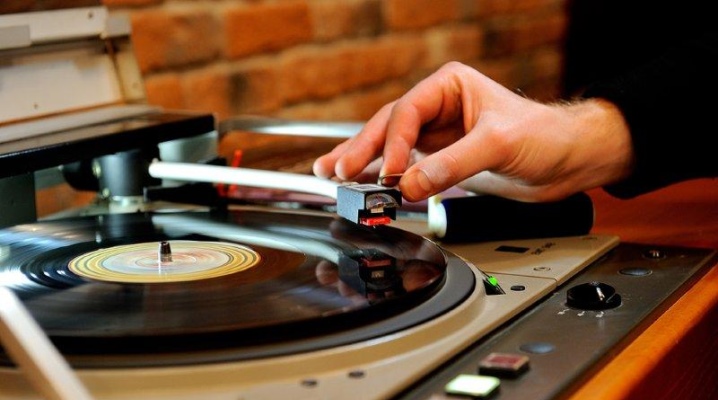
During the Soviet era, there was a constant debate about which vinyl turntable was better. Times have changed, but wrangling about this does not subside to this day. At that time, the manufacturer tried to create a unique sound. That is why vintage audio equipment is in great demand today. The conversation will focus on the best vinyl players of the times of the USSR, their features and principles of operation.
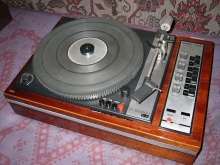
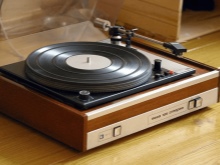
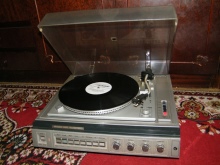
Peculiarities
Along with the existence of such devices as portable cassette players, stereo players, reel-to-reel tape recorders, vinyl record players in the USSR ranked first. It was all about the sound quality. Cassette and reel recordings were of a low sounding level. Vinyl records are another matter. One of the main features of turntables is the drive. It is of three types:
- belt;
- straight;
- roller.
The best option is considered to be a belt or belt drive type. Due to its flexible properties, it is able to drown out unnecessary vibrations and promote smooth movement of the disc.
However, it is worth considering that the belt drive has the ability to wear out quickly. If worn, the drive must be replaced immediately with a new one.
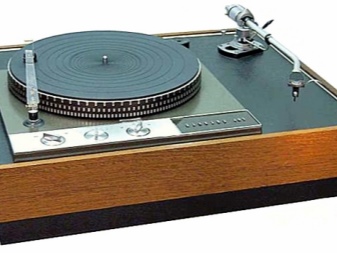
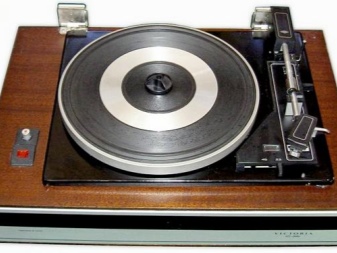
Another design feature of vinyl audio devices is the cartridge. It consists of the following parts:
- needle;
- needle holder;
- generation system.
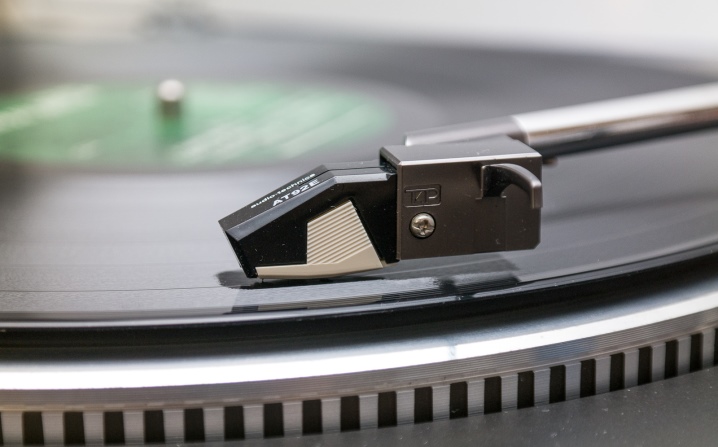
Some vintage turntable lovers use diamond needles. When played through a diamond needle, the sound becomes much clearer.
There are two types of heads for needles.
- MM. Heads of this type have a movable magnet. Pickups with such a magnet have mini-magnets that are attached to the needle holder and move in a special coil. The fixed coil is located in the body of the device. The movement of these small magnets creates a magnetic field. It then creates a voltage in the coil, due to which the sound appears.
- MS. MC heads have similar features to the MM type. The difference is in the moving coil and fixed magnets. This feature provides smooth sliding along the grooves of the record and reduces the weight of the mechanism.

It is also worth focusing on the types of needle sharpening. The optimal and more popular type is considered to be a spherical sharpening with a diameter of 15 microns. But it is worth noting that spherical sharpening is in great demand due to its low cost. Higher quality needles have hyperelliptical and elliptical sharpening. These types of needles require more precise adjustment, so beginners should opt for a cheaper one.
Vinyl players are equipped with anti-skating, which is also considered one of the main features of the technology. Many models have automatic start and stop of compositions, the ability to listen to all types of records and the presence of several rotation speeds.
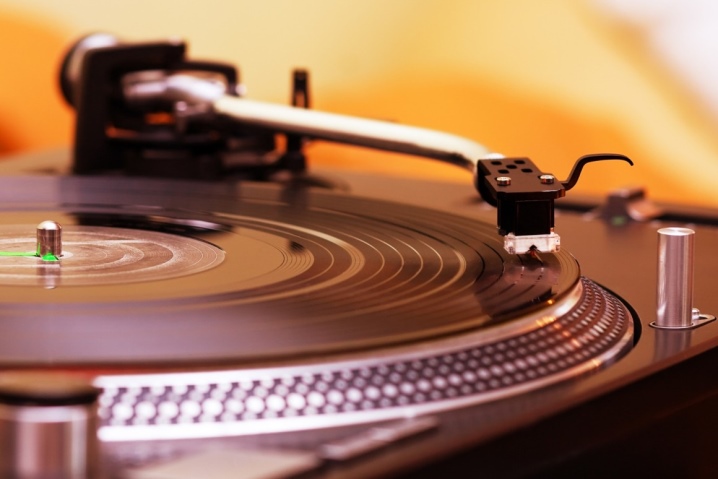
Model overview
A review of the best Soviet turntables for gramophone records should start with a top-class model. Electric turntable "Electronics B1 01" rightfully ranks first in the rating of old vintage devices. The model was released in the 60s of the last century. Of the advantages, it is worth noting a rather heavy zinc disc. At that time, the development of this device was carried out in Georgia, and this in a good sense affected the quality.
"Electronics B1 01" has a belt drive and an inertial motor at low speeds. The model is also distinguished by its excellent mechanical chassis decoupling and fixed electric motor. The aluminum top panel is equipped with stiffening ribs.
It is believed that this player sounds several times better than its western counterparts in the middle segment.
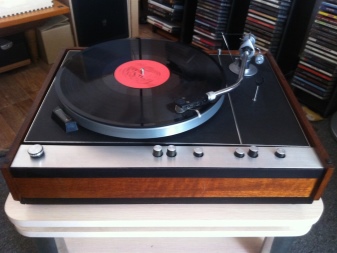
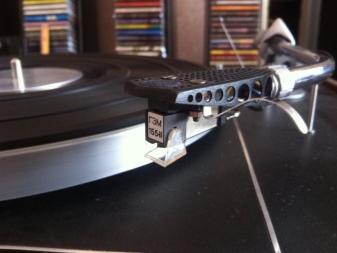
Electric turntable "Electronics 017" equipped with high rotation speed, creates a minimum of noise and detonation. The model has a high quality engine, which is used on more expensive devices. On the plus side, it is worth noting the direct arm and the unique electrodynamic damping technology.
Thanks to the direct drive, the technique plays even curved discs.
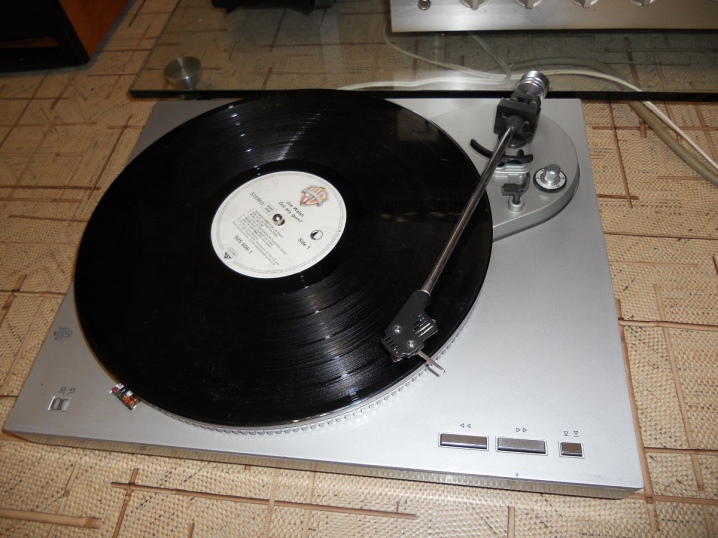
Turntable "Corvette 038" once had the cost of half a car. In the days of the USSR, this model was difficult to get. Even in our time, such equipment costs over 60 thousand rubles.
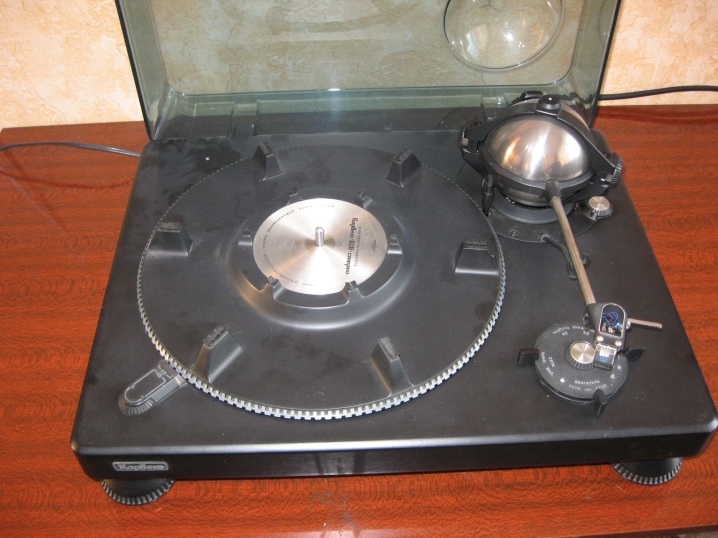
"Arcturus 006" - a player of the middle segment. S-shaped tonearm and direct disc drive make the sound better and more spacious. This model was also difficult to obtain. However, the cost of the device was much lower than that of the Corvette 038. And to this day at various auctions you can find an electric player "Arcturus 006".
It should be noted that after some modernization, the device began to sound even better. The sound of the turntable is equated with good HI-FI technology.
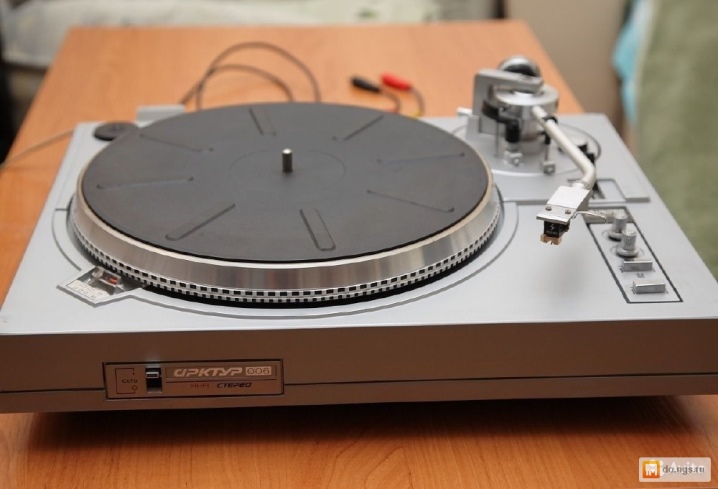
Turntables "Radiotekhnika 001" and "Radiotekhnika 101" belong to the same category. The overall advantage is a great motor, wood body, and an electrophone table.
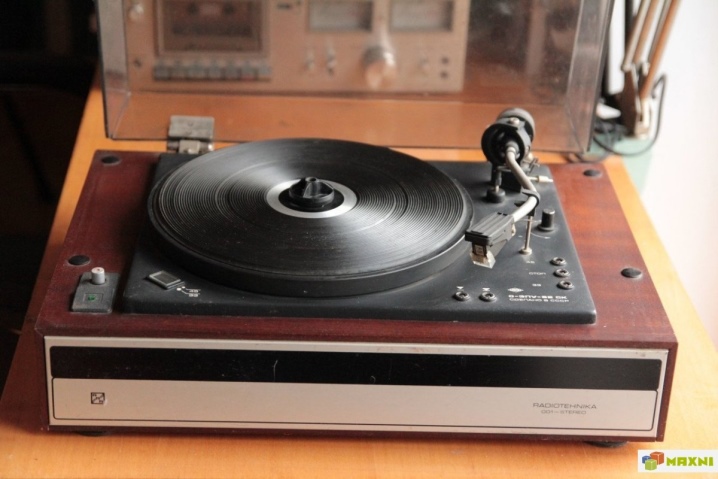
"Estonia EP 010" looks great in the interior. The model has a rich appearance thanks to a thin body, which is closed by an elegant, dark colored protective cover. The technique has the ability to switch compositions, which is carried out using a button.
"Estonia EP 010" has a pair of tonearms. One is an ordinary tonearm with a stylus, the other is with a track tracking sensor.
Despite the fact that in those days this model was "for an amateur", the device still makes an excellent impression.

Vinyl player "Vega 109" equipped with tone and balance controls, separated from each other. There are also low and high pass filters, loudness compensation and a stepped volume control.
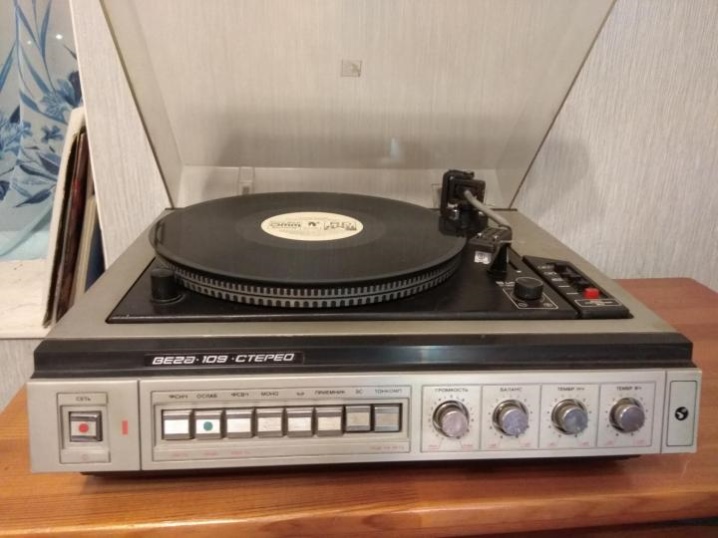
Vintage model "Youth 301" in a suitcase was released in the USSR in 1970. The device was analogous to the Yunost turntable, which was released in 1967. Youth was slightly modernized and modified to a more advanced model.
The loudspeakers are located at the top of the suitcase, and the player itself is at the bottom. The loudspeakers had an output power of 1 W. Electricity consumption was about 50 W. The sound frequency is from 150 to 7 thousand Hz. The device made it possible to reproduce all types of gramophone records at three speeds: 33, 45, 78 rpm. The production of equipment ended in the 80s of the last century. However, now you can find a rare vintage technique "Youth"... The cost varies depending on the condition of the device. More supported devices cost 500-700 rubles. For models in good condition, they can ask for from 2,000 to 5,000 rubles.
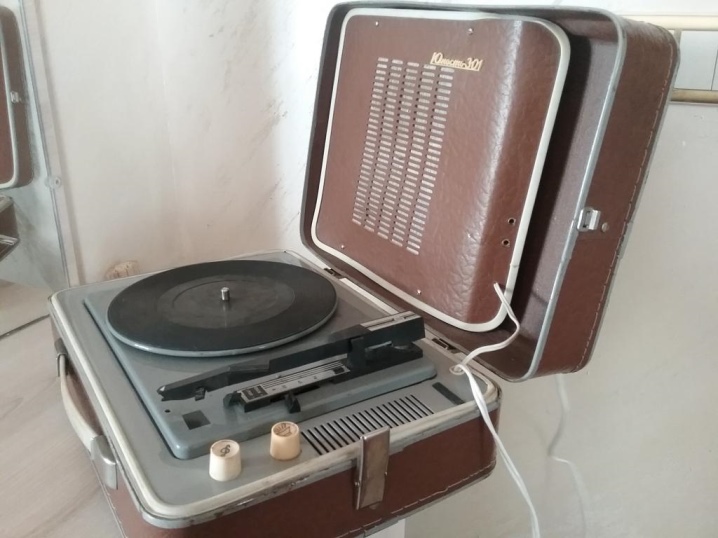
How does it turn on and work?
Usually an electric player includes 4 devices at once:
- the vinyl player itself;
- phono stage;
- amplifier;
- acoustic system.
During playback, the stylus reads the grooves of the record. The device converts these vibrations of the needle of mechanical properties into an electrical signal, which enters the phono stage. The sound is recorded on vinyl in a distorted manner.
This makes the audio tracks narrow for recording an entire album. The phono equalizer restores the distortion and the sound returns to its original source.
The sound then goes directly to the amplifier, which helps drive the turntable's speakers. This amplified signal then enters the speaker system, which returns it back to mechanical vibrations. The influence of mechanics on the sound makes it more spacious.
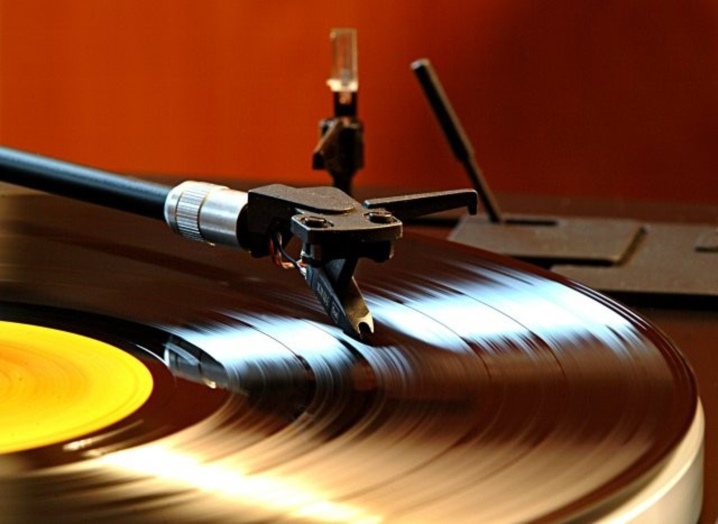
Before listening to records, you need to figure out how the player turns on. But first of all you need to find a suitable place for technology... Vinyl devices do not tolerate frequent movement. Therefore, it is worth choosing a permanent place, which will have a beneficial effect on the sound of the records itself, and on the service life of the device.
After the player is installed, you need to adjust the optimal level. The disc on which the records are played must be placed strictly horizontally. The correct level adjustment can be made by twisting the legs of the technique. Next, you need to make sure that the device is correctly configured and connected to the network. After that, you need to open the protective cover and put the record on the disc. You need to put the record so that it fits snugly against the disc, and the end of the pin of the disc is in the hole of the gramophone record.
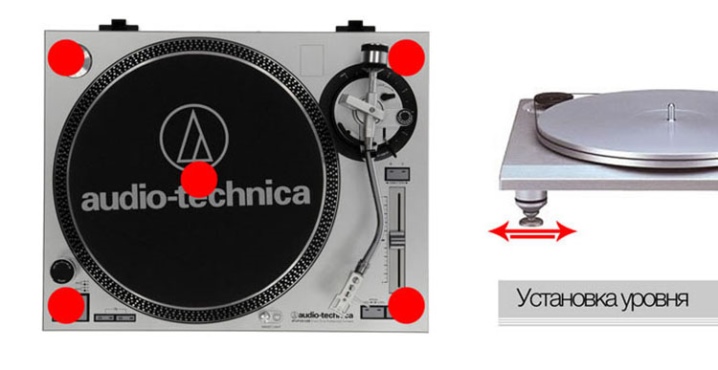
Then the engine turns on. Different models have their own control system. In some devices, the switch has three positions.
- Turn off (off).
- Rotation 33 rpm (33 rpm).
- Rotation 45 rpm (45 rpm).
With auto power on, the turntable will turn on when you move the tonearm. In this case, you only need to select the rotation speed. The next step is to raise the tonearm and place it over the starting track of the record. When properly installed, multiple grooves, spaced apart, will be located along the perimeter of the vinyl. Then you need to lower the tonearm. This should be done smoothly. When the desired hit is in the track, music will start playing. After finishing listening, return the tonearm to the parking stop.
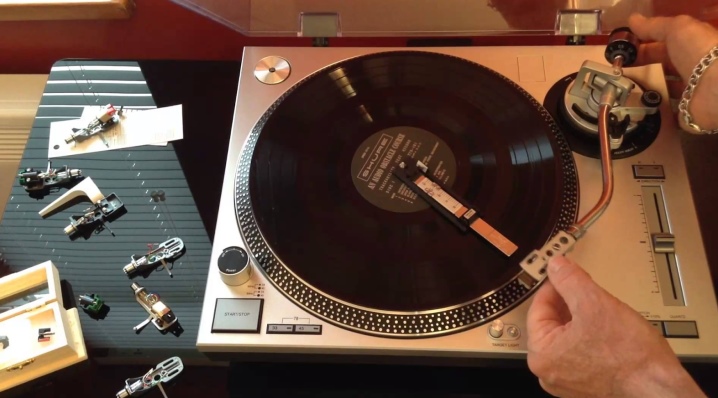
Vintage turntables from the USSR have not lost their charm. A rich history, warm sound, the excitement of searching for vinyl records - all this makes the technique popular today. Some Soviet models can be found at various auctions or in the collections of true connoisseurs of antiquity.
This article will help you understand the device and settings, and an overview of the models will point you to the right choice of a vintage device, which in Soviet times was the dream of any audiophile.

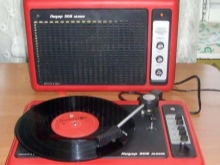
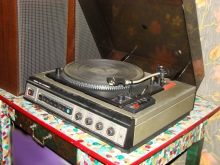
An overview of the USSR turntables in the next video.













At that time they were called turntables ...
I think the best "Vega" 106, 109, 110, everything else is difficult to restore.
I completely agree. Vega will be better than radio equipment 001 or 101. As for me, Arcturus 006, if not for the tonearm, would be much worse than the G600-602.
The comment was sent successfully.